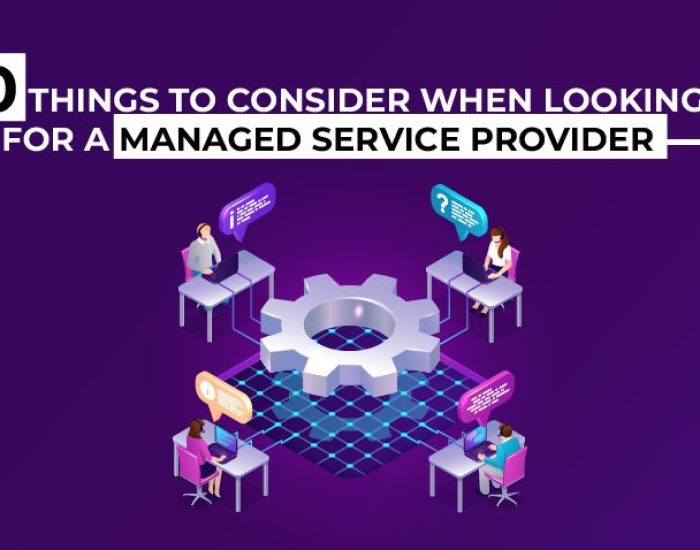Common mistakes organizations make while migrating to the cloud.
 Cloud service providers like AWS, Google, and Microsoft Azure allow organizations to host their data effortlessly without a need for specialized hardware. Many small and large organizations are rapidly moving to the cloud from traditional hardware IT infrastructure. Cloud services provide the benefit of just paying for the resources you actually use, which save you from additional cost.
Cloud service providers like AWS, Google, and Microsoft Azure allow organizations to host their data effortlessly without a need for specialized hardware. Many small and large organizations are rapidly moving to the cloud from traditional hardware IT infrastructure. Cloud services provide the benefit of just paying for the resources you actually use, which save you from additional cost.
Cloud environments are generally reliable, scalable, and highly available, prompting both start-ups and enterprise-level businesses to take advantage of migrating to the cloud.
“The sun always shines above the clouds.” But what’s missing in this quote is that beneath the cloud, there are often torrential downpours, high winds, and lightning. The same is the case with cloud computing. However, cloud computing provides a lot of benefits, there are some pitfalls as well.
This guide has compiled organizations’ common mistakes while migrating to the cloud. Avoid these common mistakes to ensure a smooth transition to the cloud that showers your organization with benefits.
1. Migrating to the cloud without governance and a planning strategy
It’s simple to provision resources in the cloud, but there are unplanned policy, cost, and security problems that can be incurred. Here planning and governance are essential. A related mistake IT managers make is that they do not understand who within the organization is responsible for a specific cloud-related task, such as data backups, security, and business continuity.
Making a shift to a cloud platform with proper planning and governance can significantly level up your organization’s productivity and eliminate the infrastructure-related roadblocks. Moreover, you can get the highest return on investment with a cloud migration while starting with clearly defined business objectives, governance, and a planning strategy.
2. Migrating all data at once
You have assessed the cost and benefit, run tests to ensure your applications are correctly working, and are ready to shift to the cloud. You may want to migrate all of your data to the cloud at once to speed up the process, but it can cost you more downtime in the long run.
When you migrate to the cloud, you are more likely to experience some issues. Therefore, if you shift all data at once and a problem occurs, you can lose your business-critical or sensitive data. To avoid this situation, execute your cloud migration in steps. Start with the test or non-essential data and then proceed with the critical data.
3. Not designing for failure
Being a pessimist can put you at risk while migrating to the cloud. As the traditional IT infrastructure, cloud servers are also prone to downtime. In this case, the best workaround is to design for failure. Amazon mentioned that “there is a need to design for failure in its cloud architecture best practices, and if you do so, nothing can defeat you.” Designing for failure includes setting up for safety to ensure that any outage that occurs results in minimal damage to the company.
I am designing a cloud infrastructure by keeping failure and downtime in mind, incorporating a fault-tolerant cloud-optimized architecture. The recovery strategies should be in-built into the design to ensure minimal damage and optimal output even when the cloud architecture faces downtime.
4. Neglecting security aspects
However, cloud service providers offer a security layer, but it is prone to security threats if the application has flaws. Any potential risk can cost you a lot if your IT infrastructure has flaws while migrating to the cloud. It is even more critical while dealing with sensitive data, such as healthcare or financial data.
The implications of attack in the case of financial data are severe. Potential security risks include account hijacking, data breaches, abuse of information, and unauthorized access. Data encryption and robust security testing are a must while migrating data to the cloud. Neglecting cloud security can put an organization to severe damage. It is always recommended to go through the Service Level Agreement (SLA) that you sign with the cloud provider.
5. Not controlling cost and prioritizing workloads
Once you see the power of cloud computing, it can stimulate enthusiasm for cloud-based projects. But if you start the process by defining use cases and understanding the cost modeling, it will help you keep track of cloud computing costs. Consider a common scenario_ when organizations use cloud services, they sometimes migrate large data sets or non-priority workloads to the cloud that might be better handled in another way.
As the data scales, the cloud cost exceeds it, and added expenses can obscure the financial benefit offered by the cloud. Having a robust understanding of what you want to achieve from a business point of view and developing a cost-based assessment will ensure that you get the cloud benefits.

6. Inadequate understanding of organization infrastructure and networks
It is essential for organizations to thoroughly understand their assets and workflow before migrating to the cloud. Organizations have inadequate knowledge of how their systems and data need to work together. As a result, they fail to create a complete map of their network and infrastructure and deliver failure.
Each cloud service provider offers unique attributes. Organizations can’t compare these providers when they do not fully understand what they need in a provider. Moreover, when organizations move their data to the cloud without proper understanding, it can cause breaks in their IT infrastructure that negatively impact consumers.
7. Not having an exit strategy
An exit strategy outlines meditations regarding extracting your applications from a cloud whenever required. Many organizations think an exit strategy is unnecessary as they don’t expect to get back from the cloud. However, it’s essential to have an exit strategy, even if you never use it. It also needs to be considered for changing service providers, not just bringing workloads back on-premises.
Conclusion
Organizations need to consider all mentioned aspects while migrating to the cloud. Taking these considerations into account before migration can help organizations reduce potential risks. Cloud migration is a complicated process that can benefit from professionals’ assistance. Help your organization avoid these mistakes by working with experienced partners.
Cloud migration is a complicated process, and disregarding any piece or feature can jeopardize the migration’s success. Protected Harbor guarantees 99.99 percent uptime with a remote tech team available 24×7, remote desktop, complete cybersecurity, and more. With the appropriate mix of business processes, technology, and people, you’ll be well on your way to reaping the benefits of cloud computing that so many businesses are currently reaping. Just make sure you’re aware of the pitfalls and typical blunders we’ve discussed that can sabotage your cloud migration. Contact us today to migrate to the cloud.






